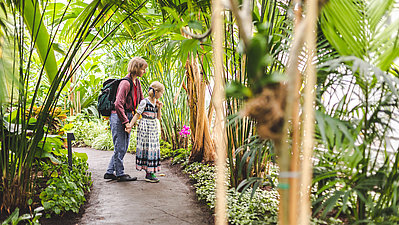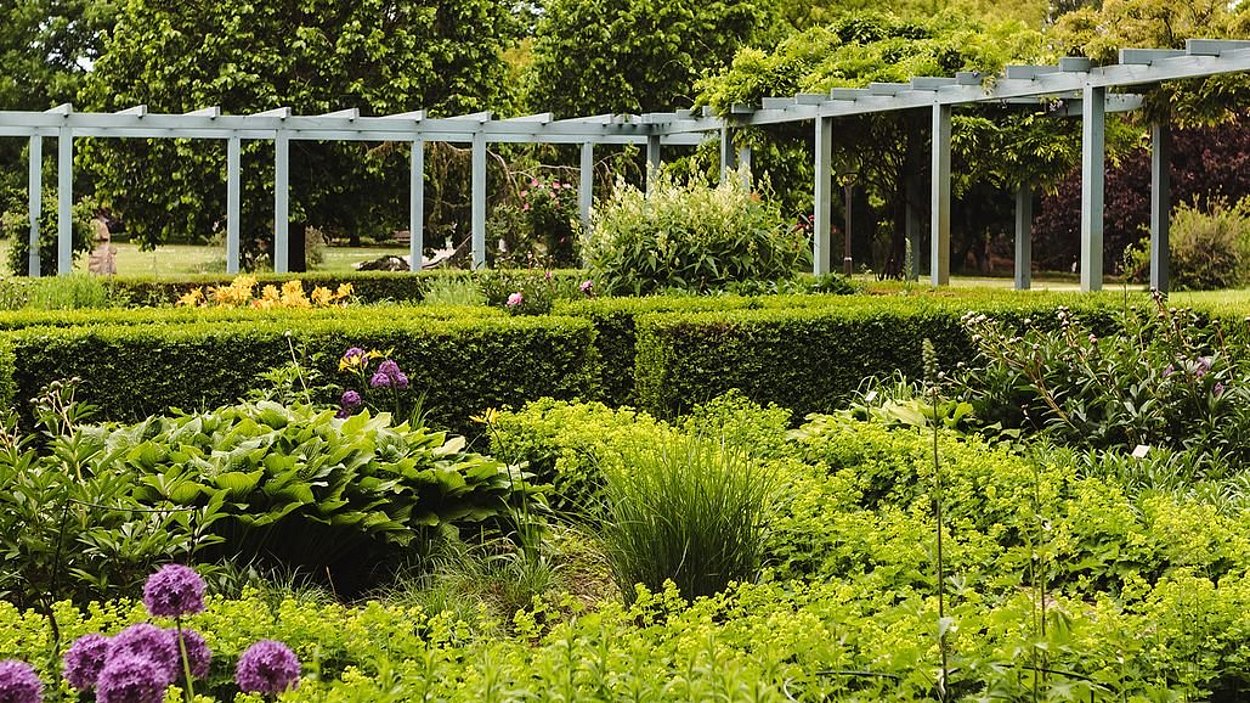Balinese Garden
Welcome to the Jungle!
In Bali, gardens often have a more practical rather than decorative purpose for their owners. In them, medicinal herbs, crops or sacred plants, which are to serve as offerings, are planted. The gardens fit harmoniously into the surrounding scenery of the Balinese jungle. That is why the Balinese Garden in the tropical hall is an opulent composition of exotic primeval forest, Balinese residences and temples and tropical plantings - and it is the only garden that lies completely in a tropical hall.


The "Garden of the Three Harmonies"
The Balinese Garden reflects people's aspiration to be in harmony with themselves, their environment and the entire universe. In Bali it is said that a harmonious coexistence of the demons of the earth, the gods of the sky and the people of the earth is essential and makes life possible. The Balinese Garden is designed so that all elements can be in harmony. That is why it is called "Garden of the Three Harmonies" - in Balinese Tri Hita Karana.
The garden was created in 2003 as part of the Berlin-Jakarta city partnership and covers a total of 2,000 square metres. In the centre of the hall stands a South Balinese residential courtyard, which is separated from its surroundings by a mudbrick wall. The building elements of the residence were designed by the Indonesian architect I Putu Edy Semara and prefabricated to a large extent on Bali. The temple complex called "Pura" serves the Bali community living in Berlin as a place where they can practice their culture as well as their religion. In 2012, two additional shrines were built and consecrated in a solemn ceremony by priests flown in from Bali. On them you will always find offerings such as flowers, fruits or incense sticks, which serve to placate the gods.
As part of the IGA Berlin 2017, the exotic complex not only received a new shell, but also a new setting: the 1,200 m² tropical hall! The energy-efficient hot-house allows cultivation of sophisticated tropical plants. Now, finally, a real Balinese jungle could emerge!
The residence and the gardens are housed in the 14 m high halls. The adjoining cold-house is used as an exhibition room during the summer months and as an orangery during the winter months.

Between Religion and Everyday Life
The "Angkul angkul" gate leads into the 500 square metre residential complex of the Balinese Garden. The architecture of the gate symbolises the triad of the body: foot (pedestal), body (door) and head (roof with crown). The "Bale Dangin" pavilion is a covered space in which offerings are prepared and where people can sleep, weave, sew or play. The paved area in front of the pavilion is the meeting place of the village community.
Once Around the World
The tropical thicket of the Balinese garden extends behind the residential complex. Here you will find foliage plants, such as the Bolt tree, club lily and croton as well as sickle, bird’s nest, maidenhair, sword and tree ferns. The latter are among the largest plants in the garden. The dense green is broken by the colours of hibiscus, gardenias and many different types of orchids.
From the main path, you will reach the palm-fringed rice terraces, from where you can enjoy sweeping views across the Balinese Garden.

Really Fragrant: the Frangipani!
On many Indonesian islands, the Frangipani tree, also called the pagoda or temple tree, is sacred and reputed to be immortal. The small tree is decorated with a spreading crown, which blooms almost all year round. It is one of the most commonly cultivated tropical ornamental shrubs. The trees are distinguished by their beautiful flowers, which are often used in Bali as sacrificial flowers or hair ornaments.
In the Balinese garden, you can marvel at a white-flowering frangipani. And it’s not only value for money for the eye: the frangipani smells so strong that it’s said all of Bali smells like it.










